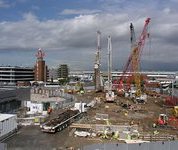
The objective is to provide delegates with a clear understanding of what constitutes “best practice” using the most up-to-date techniques (including case studies that illustrate new and innovative techniques). The workshop is designed to be easily customisable for specific requirements. For example, day 1 can be a detailed management briefing for staff (managers and supervisors) who require a pragmatic overview of what constitutes best practice in site management re noise and vibration. Day 2 can be added for staff who need more detailed information and expertise (planning, safety, environmental, measurement). It is also an opportunity to pick the brains of engineers with decades of experience. Bespoke template documentation (e.g. Section 61) can also be provided.
“Lively and entertaining .. confirmed that a lot of misconception with regard to noise and vibration are evident and that pre-planning and discussion are essential...” Roger Martindale, Estimator
“Well presented in a manner which made it interesting and informative...” Philip Chippendale, Piling Manager
“Well presented course ... course notes clear and thorough to follow...” Ian White, Quality Manager
“Good quality information, presented very well... ”Matthew Rastall, Senior Estimator
